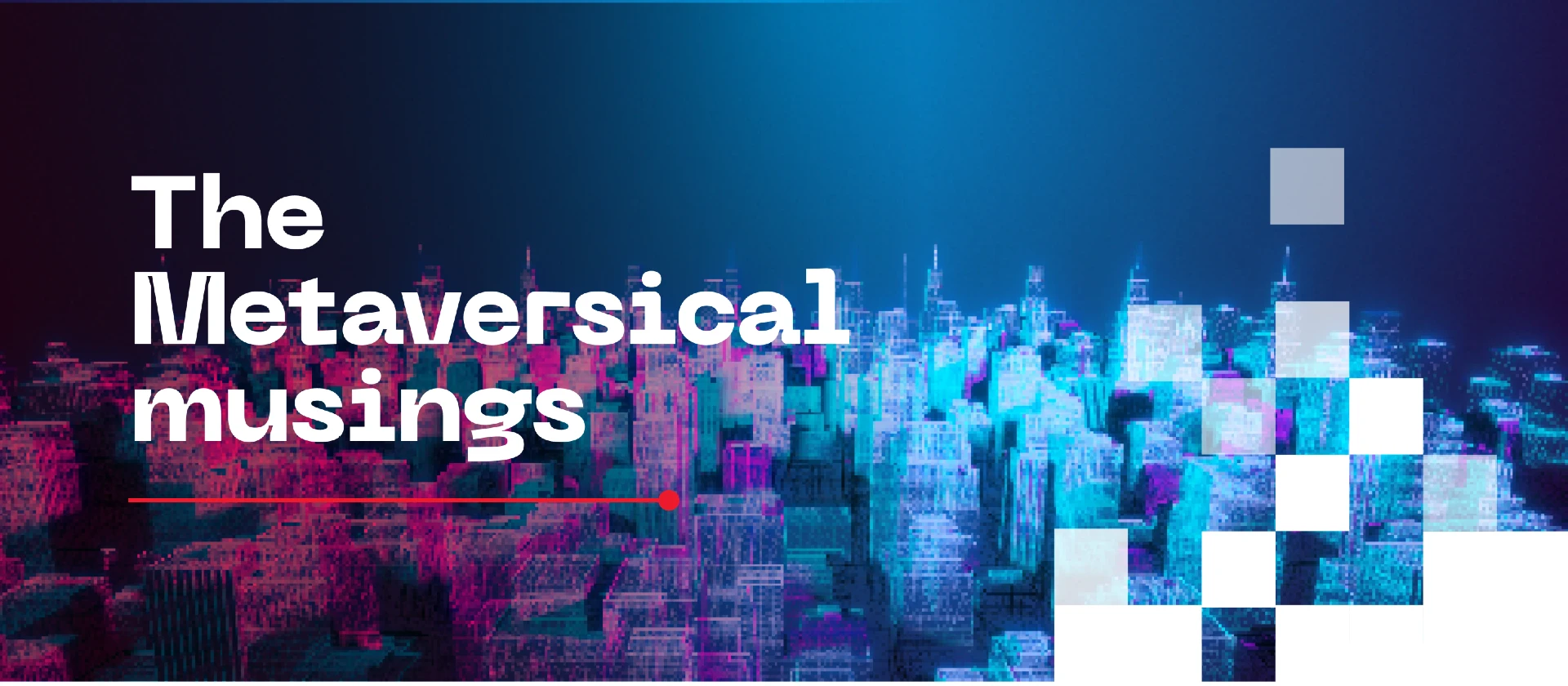

The Metaverse will be a consensual hallucination experienced by billions of people who are connected through the internet.” – Neal Stephenson, author of Snow Crash.
The word ‘meta’ carries a mystic aftertaste. A prefix that makes defined disciplines – a subject of abstraction and imagination. As a testimony to the extent of human imagination, this word has now become our reality – ‘virtually’ – ala – ‘Metaverse’. June 2021, Menlo park california became the epicenter of making ‘Metaverse’ mainstream. A subject of science fiction is now a fast growing human interaction evolution.
In this context we at BigBrandTheory engage in a series of metaversical musings from the Brands of Tomorrow lens. Bringing to you slices and dices of insights and information that put into spotlight – the how, why and who of brands and metaverse.
We start this series with trend spotting and bring to you what the existing ‘Brands of Tomorrow’ are doing in the space of Metaverse and using this all new experience to strengthen consumer connect.
Trend #1 – In-game Advertising play:

Where the player becomes the consumer. Web3 and metaverse have added a whole new dimension to in-game advertising. Giving consumers a whole new way to interact, live and play and deepening the play economy and monetization opportunities. “Metaverse advertising” was one the most popular search terms on Google Trends for 11 of the last 90 days. This advertising market, referred to as VDOOH (virtual digital out-of-home), is said to be part of the lucrative DOOH space, estimated to be worth $50 billion by 2026.
Coca-Cola, Samsung, Volkswagen have gone live with virtual billboards within games such as Football Manager & Hype Scrape. Plenty of other brands are rushing in. Bidstack revealed that these ads enhance gameplay realism for 95% players and increased purchase intent by 12%.
Trend #2 – Metaversing your Marketing

Replicating your real-world offering into the virtual one is the new way to engage with the consumers in a parallel space and thus encourage real world action. Numerous brands are recreating their real world services, building branded characters or bringing their mascots alive within games. Natively inserting themselves as a relevant experience in the context of the game, rather than interrupting it has brought them quite a few brownie points and conversions. Two games in particular, Animal Crossing:New Horizons and Fortnite, have become fertile ground for brand insertions.
Food delivery service Deliveroo last year sent a fleet of virtual riders to deliver virtual treats to players, which it paired with promo codes to order food in the real world. An adorable fleet of Deliveroo riders vroomed around the players’ islands and handed out virtual deliveries. While their avatars nom down some virtual treats, players also received promo codes to order food in the real-world, too. Deliveroo’s marketing campaign in Animal crossing gained around 3 Million in game engagement.
Trend #3 – Where avatars meet virtual merch

I remember playing IT girl and being obsessed with it because it allowed me to don a red-carpet look and walk into parties. A concept of living in the virtual as avatars spells big opportunity for brands. Endless possibilities to clothes , style and feed them. Every real product and aspiration can be sold to their virtual counterparts.
A lot of luxury brands like Louis Vuitton, Balenciaga and Gucci are creating digital possessions that can be bought in-game, dropping limited-edition NFT collections and even making their own branded game worlds. Crack open a non-fungible bottle: Coca-Cola has already entered the metaverse, with both an NFT drop and the recent launch of a “pixel-flavored” virtual soft drink called Zero Sugar Byte. Gucci has released digital collections of its signature clothes and goods in Roblox, with avatar creator Zepeto, and Giphy. The brand created a real world integration where customers can dress their avatar, while purchasing their own real clothes.
Trend #4 – Become a Virtual Experience

Create a conscious virtual experience or open a store. Real-estate experience is yet another avenue that is catching up fast in the Metaverse space. Sentosa Development Corporation recreated Sentosa Island in Animal Crossing, inviting players to visit its attractions and do some virtual yoga “while cooped up at home”. Unilever’s mayonnaise brand Hellmann’s created a branded island in Animal Crossing where it invited players to drop off their spoiled turnips in exchange for a real-world donation to Canadian food-rescue charity Second Harvest. It formed part of the brand’s purpose strapline that “food is too good to be wasted”.
General Mills’ web-based tailgate experience earned more that 500,000 impressions across traditional and social media channels. Ralph Lauren used ‘obsess’ platform to create a virtual store. Hyundai Motors launched 5 theme parks on ROBLOX to introduce younger consumers to Hyundai.
Stay tuned as we keep the genome exploration going.
From demystifying and simplifying the Metaverse ecosystem for you to giving you a rough roadmap on going all Metaverse a lot more in store for you.
Note: Welcome to Brands of Tomorrow, a 2022 adventure of BigBrandTheory. It’s a voyage and you are our co-traveler. We will come to you with one unique content piece every fortnight. This step will be in the direction of inching closer to the Brands of Tomorrow. Feel free to add a new direction, start a new conversation, or create a new equation.
https://www.campaignlive.co.uk/article/deliveroo-coca-cola-venus-balenciaga-–-biggest-opportunities-brands-metaverse/1730404
The concept of the metaverse first appeared in the Avalanche written by American science fiction writer Neo Stevenson in 1992. It describes a cyber world parallel to the real world, the Metaverse, where people in the real world all have a digital avatar; they interact and live with each other through these avatars. The sandbox game platform Roblox as the “first listed company under metaverse concept” again proposed the concept of metaverse in its prospectus, which triggered a heated discussion in capital markets and related industries. Then Facebook changed its name to “Meta”, stimulating even more enthusiasm in the market for metaverse. Hence the sci-fi concept of the metaverse was brought into real life.
Brands of Tomorrow: The Metaverse edition.
Introducing metaverse
It’s ecosystem
The rules of engagement for brands – consumer
Brands of Tomorrow and their Metaverse stints
For example, Hellman’s award-winning activation within Animal Crossing encouraged players to drop off their rotting vegetables on ‘Hellman’s Island’. For every turnip, the company would donate meals to real-life FareShare food banks.

Pravin Shah
BigBrandTheory

Reena Mehta Kamath
BigBrandTheory

Keerti Chandan
BigBrandTheory
